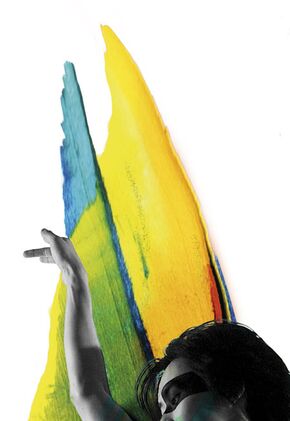Development of Neuroenergetic Kinesiology

The development of Neuroenergetic Kinesiology started in 1997 when Hugo was still studying with Charles Krebs in Melbourne. Charles taught Hugo Applied Physiology and during an assessment Charles once asked Hugo to demonstrate a holographic muscle testing position.
Hugo demonstrated a very accurate and original method to locate the muscle position and Charles recognised this as a breakthrough in kinesiology. It is still taught in Applied Physiology today and is called the “Tobar Technique”. Strong from that recognition, Hugo was encouraged to start taking note of other ideas he’d had as a student which then led to the development of the basic concepts underpinning the “Brain Hologram” and “Chakra Hologram” courses.
In 1998, Hugo started teaching his first courses and with the encouragement of Charles, he was invited to present at the 1999 Applied Physiology annual meeting in Tucson Arizona. At this meeting, he met the owners of some the most important institutes in Europe. Most importantly he met Alfred Schatz one of the owners of Kirchzarten Germany, the world’s largest kinesiology institute. They subsequently invited him to teach his courses and ideas at their institutes in Germany, Belgium and Switzerland. To this day, his collaboration with Alfred and the Kirchzarten Germany Institute remains one of the driving forces behind the promotion of Neuroenergetic Kinesiology to kinesiologists all over the world.
Hugo’s Neuroenergetic Kinesiology material has since been very prolific and in constant evolution. It led to the creation of the renowned Neuroemotional Pathways series (NEPS) which has become an important kinesiology method for balancing stress around all kinds of emotional issues. The Brain Hologram workshop was redesigned into 3 courses (Brain Hologram A, B & C) and the nutrition-based material was condensed into 3 separate workshops (Nutrition Hologram A, B & C). Other major kinesiology developments introduced by Hugo blossomed into advanced workshops on issues of stress in and around the immune system, hormonal system, body structure, neurotransmitters and the primitive reflexes.
Alongside the creation of complex courses, Hugo started developing 8 introductory two-day courses for learners new to the concepts of kinesiology. These courses include Principles of Kinesiology 1 to 4, Brain Formatting, Chakra Metaphors, Physiology Formatting and Balancing with the 5 Elements which now form part of the first year of diploma training.
The Pathology Hologram series was subsequently designed to deal with stress in the advanced physiology pathways and development of pathologies in the 11 main functional systems in the human body. These include the nervous system, circulatory system, respiratory system, urinary system, digestive system, integumentary system, haemolymphoid system, endocrine and reproductive systems, structural system, eyes and ears systems.
Hugo still to this day develops new courses on a regular basis stimulated by new research results in anatomy and physiology. The new material is well received and put to the test by various groups of practitioners around the world which have been supporting his work for decades. There are groups in Austria, Australia, Belgium, Germany, Netherlands, Spain, USA, UK and Ireland. He has recently expanded his reach to countries such as Hungary, Russia and Ukraine.
Hugo has designed 54 currently taught courses, presented at 37 national and international kinesiology conferences and authored 91 kinesiology publication contributions. He is considered a world leader in kinesiology development; as his friend Alfred Schatz says “Neuroenergetic Kinesiology is the most complete system of kinesiology in the world today”.
In 2008, he registered NK Institute as an RTO and developed NK training into three different kinesiology qualifications, giving students the opportunity to study Neuroenergetic Kinesiology through a nationally recognised training framework.
